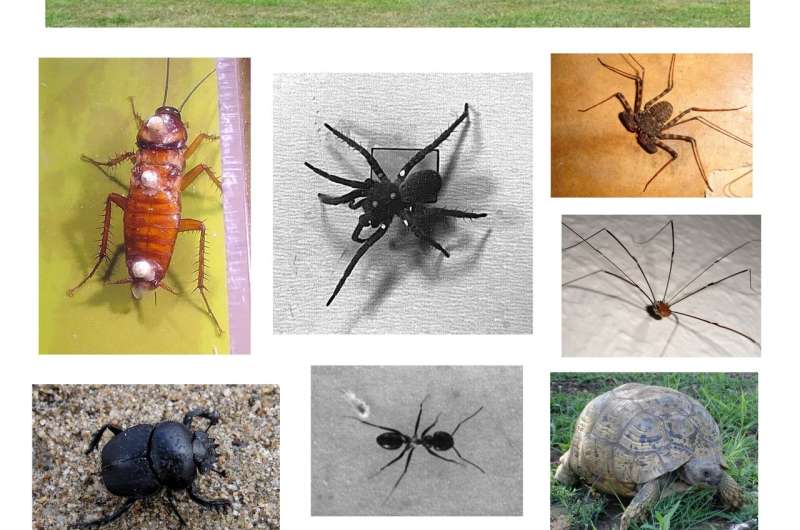The dynamics and energetics of locomotion depend on the number of propulsive legs

Although land animals can move in many different ways, most terrestrial creatures use legs to crawl, scuttle, walk and run about. Leg-propelled animals such as mammals, insects, spiders or centipedes, feature a wealth of differently designed locomotor apparatuses and a wide range of leg numbers. In order to cover distances with energy efficiency, many terrestrial animals exploit mechanisms enabling energy recovery. Such mechanisms can comprise repeated interconversion of kinetic and potential energy due to vertical oscillations of the body's centre of mass or the use of elastic energy stores. They typically occur in bouncing gaits—as found in running bipeds or trotting quadrupedal and hexapedal animals.
A current study led by Dr. Tom Weihmann from the University of Cologne's Department of Animal Physiology has now shown that body dynamics in legged animals and robots depend strongly on the number of propulsive legs. The study, titled "Leg force interference in poly-pedal locomotion," has now been published in Science Advances.
In the past, trotting animals have served as models for legged robotic applications. "Scientists and engineers have examined efficiency-enhancing mechanisms, but until now, we knew very little about the effect of different numbers of legs on the ability to recover movement energy and to economize long-distance locomotion," says Weihmann.
His current study shows that growing leg numbers increasingly impede energy recovery because significantly higher degrees of leg synchronisation are required. The results indicate that small changes in leg coordination patterns have a much higher impact on the body dynamics in locomotor systems with many legs than in those with fewer. While animals with only a few walking legs often exploit mechanisms for energy recovery when approaching intermediate to high running speeds, animals with more than three pairs of walking legs are almost unable to achieve the required high level of leg synchronisation.
The revealed mechanisms could also have been a driver for quadrupedal animals like basilisks and other lizards to adopt bipedalism during high-speed locomotion. "Ultimately, these mechanisms could also partly explain the primeval development towards bipedal dinosaurs from their quadrupedal ancestors, which led to the wealth of present-day bird species," adds Weihmann. "And the model may even help to explain one of our own peculiarities: the bipedal human gait."
The new insights also provide strong and reliable scaffolding for emerging neuro mechanical modeling approaches and affect ideas of locomotor systems in general, which may lead to improved control mechanisms of fast-running legged robots.
More information: Tom Weihmann, Leg force interference in polypedal locomotion, Science Advances (2018). DOI: 10.1126/sciadv.aat3721
Journal information: Science Advances
Provided by University of Cologne




















